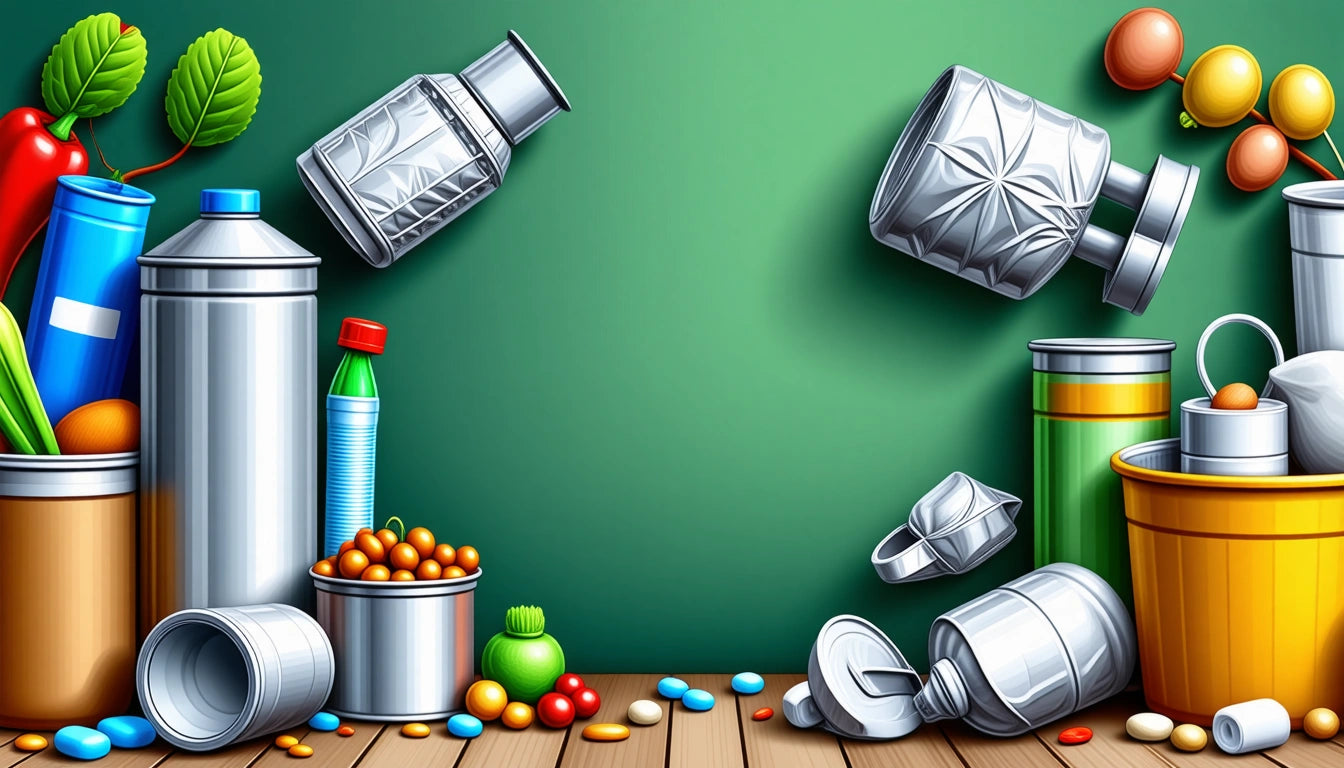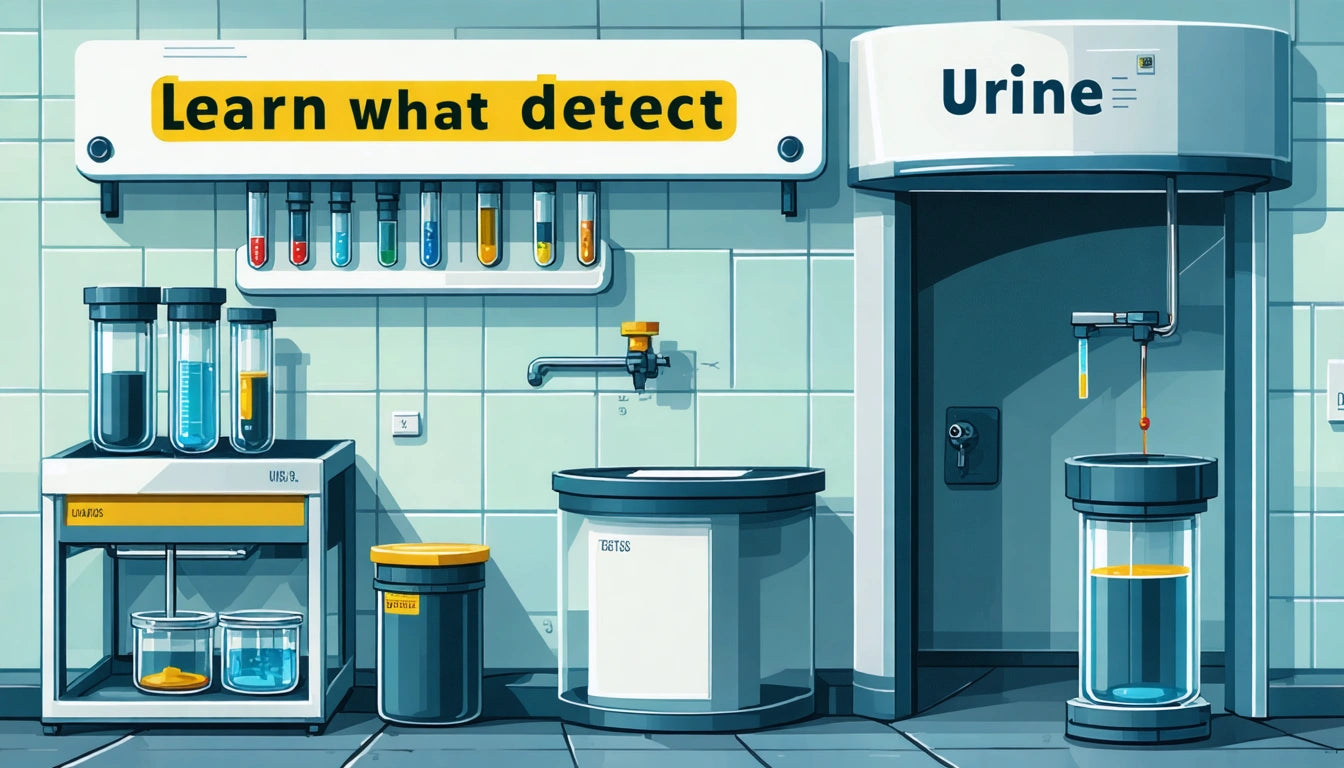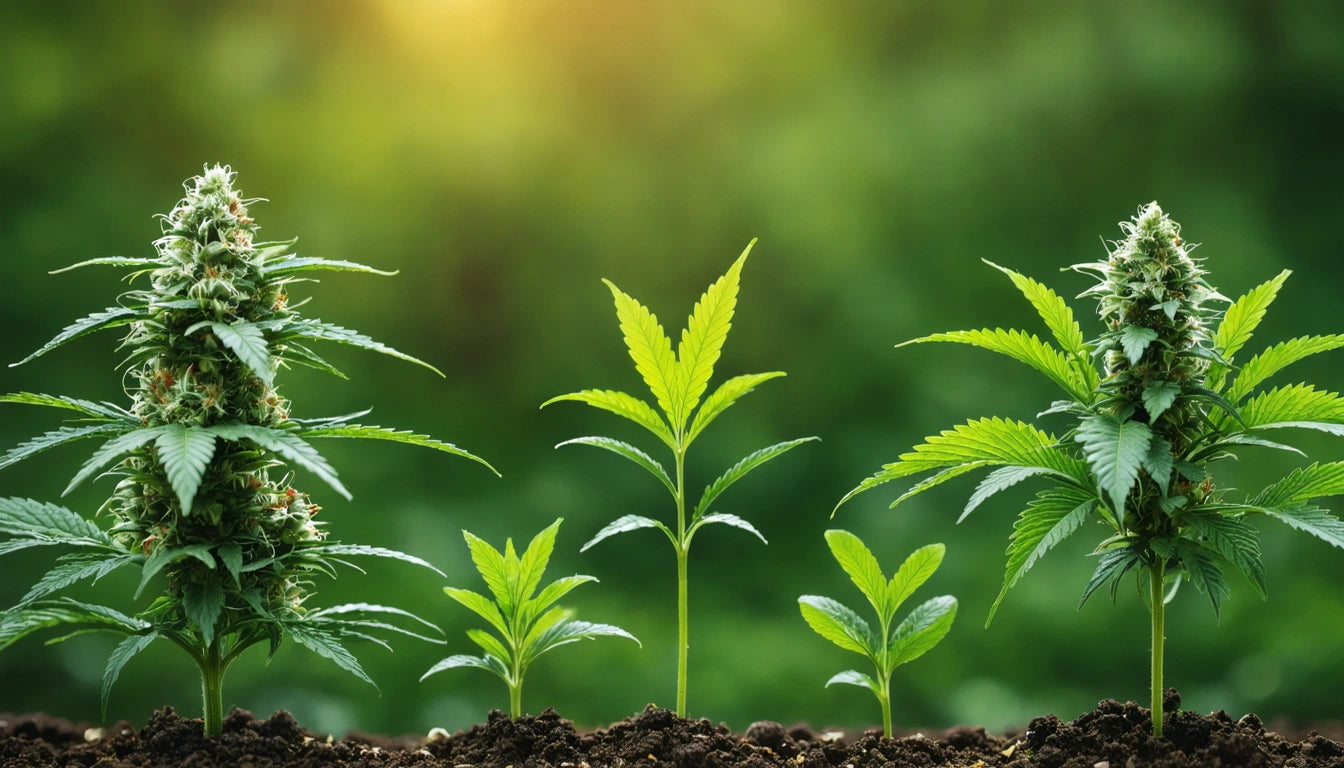Table of Contents
Recycling Guide: Understanding the Recyclability of Common Food Packaging Materials
Food packaging represents a significant portion of household waste, with the average American generating about 4.5 pounds of trash daily. Understanding which food packaging materials can be recycled is crucial for reducing landfill waste and conserving resources. This guide explores the recyclability of common food packaging materials, from metal cans to flexible packaging options.
Metal Food Packaging: Cans, Tins, and Aluminum
Metal food packaging is among the most recyclable materials in our waste stream, with impressive recycling rates and significant environmental benefits.
Are Food Cans Recyclable?
Yes, food cans are highly recyclable. Made primarily from steel with a thin tin coating, these cans can be recycled indefinitely without loss of quality. According to research on aluminum can recycling, the process uses significantly less energy than producing new cans from raw materials.
To properly recycle food cans:
- Rinse out food residue
- Remove paper labels when possible
- Leave the lid partially attached or place it inside the can
- Do not crush cans, as this can confuse sorting machinery
Are Pie Tins Recyclable?
Aluminum pie tins are recyclable in most curbside programs. These thin, malleable containers are valuable in the recycling stream. However, disposable aluminum pie tins often contain food residue that must be removed before recycling. A quick rinse is usually sufficient to prepare them for the recycling bin.
For accurate measurement of materials during the recycling sorting process, facilities often use specialized equipment similar to the precision digital scales used in various industries to ensure proper material classification and processing.
Flexible Packaging: Foil and Mylar Bags
Flexible packaging presents more recycling challenges than rigid containers due to its multi-material composition.
Are Foil Coffee Bags Recyclable?
Foil coffee bags typically contain multiple layers of materials, including paper, plastic, and aluminum foil. This mixed-material construction creates challenges for recycling. Most curbside programs cannot process these items because separating the materials is difficult and costly.
Some specialty recycling programs accept foil coffee bags through mail-in programs. Companies like TerraCycle partner with coffee brands to collect and process these materials. Check with your coffee brand to see if they offer a take-back program.
Are Mylar Bags Recyclable?
Mylar bags, made from metallized polyethylene terephthalate (PET), are not typically recyclable through municipal programs. These shiny, crinkly bags are commonly used for snack foods, pet food, and specialty coffee.
The composite nature of mylar creates significant recycling challenges. While the technology exists to recycle these materials, few facilities have the capability to process them effectively.
Innovative Packaging Solutions: Resealable Can Ends
Resealable can ends represent an innovative approach to sustainable packaging. These specialized lids allow consumers to reseal canned products after opening, extending shelf life and reducing food waste.
From a recycling perspective, most resealable can ends use the same materials as traditional cans but may include additional plastic components. The metal portions remain recyclable, but the plastic elements may need to be separated and disposed of differently depending on local recycling guidelines.
Research on aluminum recycling shows that innovations like resealable ends don't significantly impact recyclability as long as the primary material remains aluminum or steel.
Recycling Challenges and Contamination Issues
Food packaging recycling faces several challenges that impact effectiveness:
Contamination
Food residue is the primary contaminant in packaging recycling. Even small amounts can render otherwise recyclable materials unusable or downgrade their quality. This is particularly problematic for items like canned goods, where food residue can be difficult to remove completely.
Multi-Material Packaging
Many modern food packages combine different materials for functionality, creating recycling challenges. For example, a can with a plastic lid or a foil bag with a paper layer requires separation before recycling.
Understanding which plastics can and cannot be recycled helps consumers make better disposal decisions for mixed-material packaging.
Best Practices for Food Packaging Recycling
Follow these guidelines to maximize the recyclability of your food packaging:
- Empty and rinse all containers before recycling
- Separate components made of different materials when possible
- Check local recycling guidelines, as they vary by location
- Look for recycling symbols and numbers on packaging
- Consider packaging materials when making purchasing decisions
- Avoid putting non-recyclable items in recycling bins
When in doubt about whether an item is recyclable, it's better to throw it in the trash than risk contaminating an entire batch of recyclables. Contamination can cause otherwise recyclable materials to be diverted to landfills.
Future Recycling Trends and Industry Innovations
The food packaging industry continues to evolve toward more sustainable and recyclable options. Several promising developments include:
Mono-Material Solutions
Manufacturers are increasingly designing packaging using single materials rather than composites, making recycling more straightforward. This trend could eventually make items like foil coffee bags and mylar packaging more recyclable.
Advanced Sorting Technology
Recycling facilities are implementing artificial intelligence and advanced optical sorting to better identify and separate different types of packaging materials, including challenging items like canned goods packaging and flexible materials.
Consumer Education
Improved labeling and consumer education campaigns help people understand which items are recyclable in their area. Clear instructions on packaging help reduce contamination and increase recycling rates for items like pie tins and food cans.
By staying informed about recyclability and following proper disposal practices, consumers can significantly impact the effectiveness of recycling programs while reducing the environmental footprint of food packaging waste.











Leave a comment
All comments are moderated before being published.
This site is protected by hCaptcha and the hCaptcha Privacy Policy and Terms of Service apply.